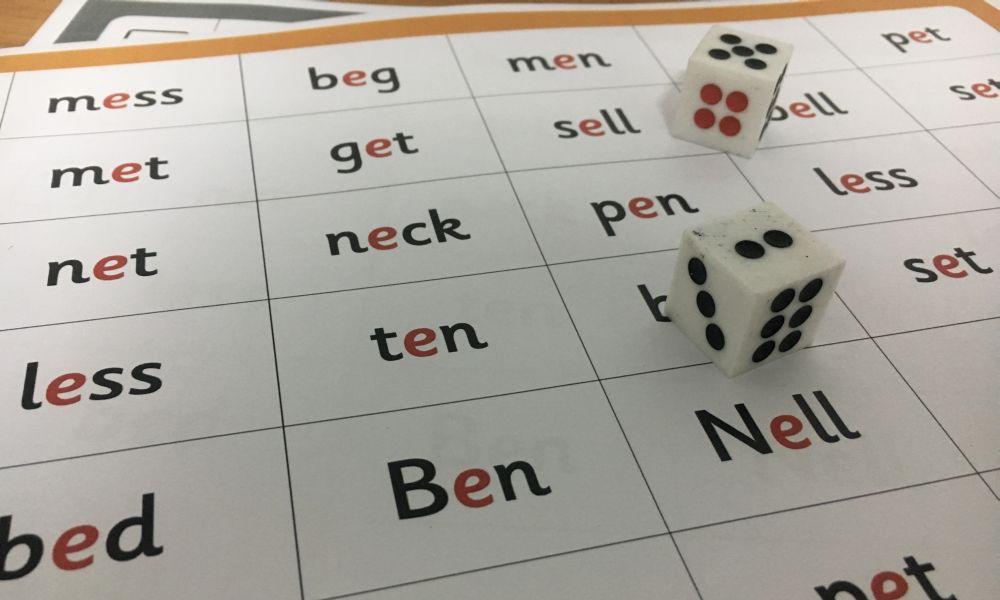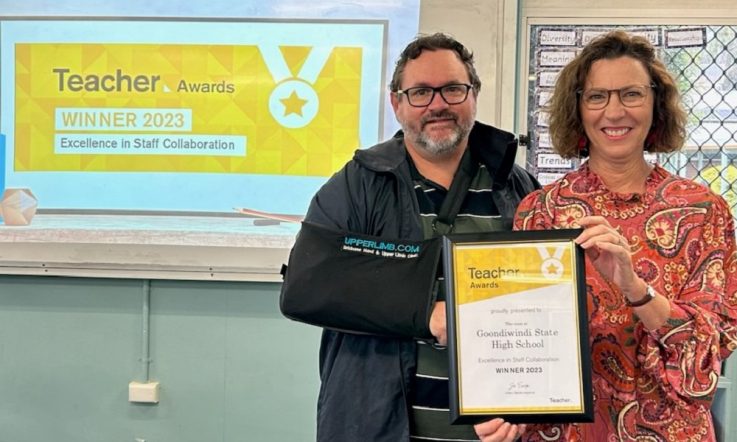‘This works for your neurotypical, but it also works for your neurodiverse, which is what we want – an approach that works for everyone.’
After her double win at the National Excellence in Teaching Awards for her work helping teachers and schools in New Zealand implement structured literacy into their practice, Amie Roberts speaks to Teacher about how this approach empowers all students.
To start things off, congratulations on the 2 awards. How does it feel?
In New Zealand, Resource teachers are available to work alongside schools to provide learning support when needed. They are specialist, itinerant teachers who work across a number of schools. [The win] is really humbling and it’s also fantastic because Resource Teachers, well teachers in general, often don’t get a lot of praise or recognition. So, what’s been lovely is other people are really enjoying that sense of recognition too.
It’s also lifting the status of structured literacy here [in New Zealand] ... I’m all about trying to get effective literacy instruction into every classroom and if I can do that through a bit of media attention then that’s fantastic. And since I’ve won the award, I’ve had several schools who were quite hesitant to work with me suddenly wanting to.
Now you’ve got the recognition they’re like ‘OK, let’s see what you’re about’?
Yeah, that’s sort of the running joke, ‘Amie is New Zealand’s Best Teacher.’ If it gets me into schools I previously couldn’t, then we’ll give it a go!
Can you give readers a quick overview of what you do?
So, I’m a Resource Teacher of Learning and Behaviour (RTLB). Basically, we are teachers who have an interest in children that need extra support. So, we step out of the classroom and get a lot of PD on autism, ADHD, global development delay, dyslexia, all sorts of things, and [then] schools put in referrals to us. That might be for an individual student [that needs specialist support], a group of students, a whole school; it might be a huge project approach, which is what we’re doing now.
You come from a teaching background, what led you to step out of the classroom and go down this route instead?
I worked in a primary classroom for a couple of years and during those years I had 2 very difficult students, and I had an RLTB come and work with me. She said to me, ‘I think you’re in the wrong job, I think you’ve got skills we could be using in different ways.’ And so, basically, she twisted my arm and dragged me to an interview, and I got the job!
What is Structured Literacy in the context of your work?
It’s an explicit, systematic, sequential teaching of literacy.
Basically, you start at the ground roots of phonological awareness, building up to word level, comprehension, fluency, vocab – all those things. It’s not just phonics, which is what a lot of people think, it’s all those things [above], but it’s taught cumulatively, systematically, diagnostically so we know where the students are at, and we plug those gaps while still stretching them. It’s not assuming they know stuff. We need to know what they do and don’t know, and we teach to that, which is very different to how we’ve taught in the past – the ‘throw paint at the wall and hope it sticks’ approach.
In your experience, if schools aren’t currently using structured literacy, what is the current way of doing things?
A lot of ‘we’ll pop books in front of children, and we’ll talk about the storyline, and we’ll look at the pictures and the first word, and we’ll read on for meaning and basically we’ll just guess our way through this text and hope that with repeated reading those words will stick.’
For about 50% of kids, they do. But for about 50%, they don’t.
Some teachers would have been doing this approach for years and that’s all they’ve ever known. What are the initial attitudes when you go into these schools and challenge that approach?
You get mixed attitudes. A lot of younger teachers are like ‘thank goodness, finally.’ They love it.
For older teachers, it’s sometimes loved, but then they have this grief cycle where they look back and think [about previous students they’ve taught]. I’ve got names in my head of children I know I could have helped, and I wasn’t teaching for as long as some of these other [teachers]. You can see the grief and sometimes that’s expressed as grief, and they’ll cry. Sometimes it’ll be anger and pushback. Everyone reacts differently.
And then I’ll get others who are like ‘no, I don’t believe in that, it’s just another pedagogical swing and it will swing back again’.
Do even the most hesitant of teachers come around once they start seeing results? Or is the challenge just getting them to implement SL?
What I’ve found is they’ll try little bits and say, ‘oh that little bit worked, but I’m keeping everything else.’ And I’ll say ‘That’s OK. Next week we’re going to try add in another bit,’ and then it’s truly just prune and prune and prune until some of the techniques they’re using that aren’t evidence-based are gone.
I had one teacher who was about 25 years older than me, so I was quite nervous about working with her. She kind of looked at me when I first talked to her like ‘that’s a bit scripted… that’s too much phonics,’ you know, all the normal arguments. But she was willing to give it a go and she saw the fastest results she’d ever seen. She changed her whole teaching pedagogy.
What I found is you just journey with the people. I don’t know everything either, we’re learning together, we’ll do it together.
That idea of taking that journey with them, how does that work?
This can depend on whether it’s an individual class or whole school, but I’ll sit down with the teacher, and we’ll talk about what their needs are and what the student’s needs are – we include the family and the student in that if that’s appropriate.
Then we do observations together; so, I’ll observe the teacher’s practice and the child interacting, then we analyse that together with the family and anyone else who needs to be a part of that team – so often there’s speech therapists, occupational therapists, ed-psyches (educational psychologists), there can be other people involved, which is quite cool.
And then we put an action plan into place. We’ll come up with some measurable goals and then from those goals I will do a lot of modelling, or we’ll find examples of modelling best practice so that they can see it. And then sometimes we’ll co-teach, because often they’re a bit scared.
Then I will do observations or, if they hate that, they can video their best examples and we can look at that together. But usually by that stage we’re almost friends, so it’s really not a big deal me popping in.
And then that cycle repeats.
But what we’re trying to do more is we’ll train an in-school literacy coach or coaches and then they’ll train their teachers, with our support. Because some of our schools have 30-40 staff, plus teacher aides, plus they want you to run parent workshops and it’s in multiple schools… I only work 4 days a week! It’s going mad over here, which is excellent.
Yeah, the fact that you are so busy means you must be getting great results. Can you provide some examples of those results?
It’s quite tricky because a lot of our schools are quite new to the journey, and one of the last parts of the journey is how to use assessments in structured literacy, so while they’re using structured literacy, they haven’t quite made the shift. But I’ve got snippets.
At one school I worked with, they trialled structured literacy in their new entrance rooms. So [in one new entrance classroom] they did their normal program (whole literacy) and in the other they did a structured literacy approach. They found that, by the end of the year, the 6-year-old cohort in the whole literacy class, 44% were at where they should be for reading. And in the structured literacy class, 93% were at. They were sold after that!
Another school started with only implementing [structured literacy in] spelling; 33% of the kids were at expected spelling when they started and after one year 66% were.
At another school the principal emailed me and said the most important thing he noticed was the gaps were closing, that tail of underachievement was lifting. The tops kids were lifting as well but they’d come closer together because [the kids at the bottom] had made such nominal progress.
And I’ve got one last one. I’d been working with a group of children, and they had been doing whole literacy for years and I was hitting my head against the wall. Then, in year 4, they picked up a structured literacy approach. Now, these children were all neurodiverse, they had ADHD, global development delay or autism, and for the first time in 3 years they moved off emergent reading books. After 3 terms, their letter and spelling patterns were making accelerated progress in their learning.
I would walk into the classroom, and they would be sitting there reading books. I would be like, ‘that’s not my kids!’ and they’d be grinning and say, ‘come sit!’ and they’d show me. There’s still a long way to go, but for the first time in 3 years of schooling they were reading, they were spelling, they were able to write.
[Structured literacy] works for your neurotypical, but it also works for your neurodiverse, which is what we want – an approach that works for everyone.
Amie mentions that a lot of the teachers she works with are hesitant to change their teaching practice, even when presented with evidence that shows what does and doesn’t work. How often are you reviewing your own teaching to ensure it follows the evidence and research? Are you open to change?
Does your school undertake shared learning, where teachers can discuss and share their knowledge, learn fresh tips, tricks, and review the latest research? Is this something you can organise within your cohort?
Does your school support upskilling and personal development? Do you know who you can talk to if you want to learn more about practices and skills that can support your teaching?



